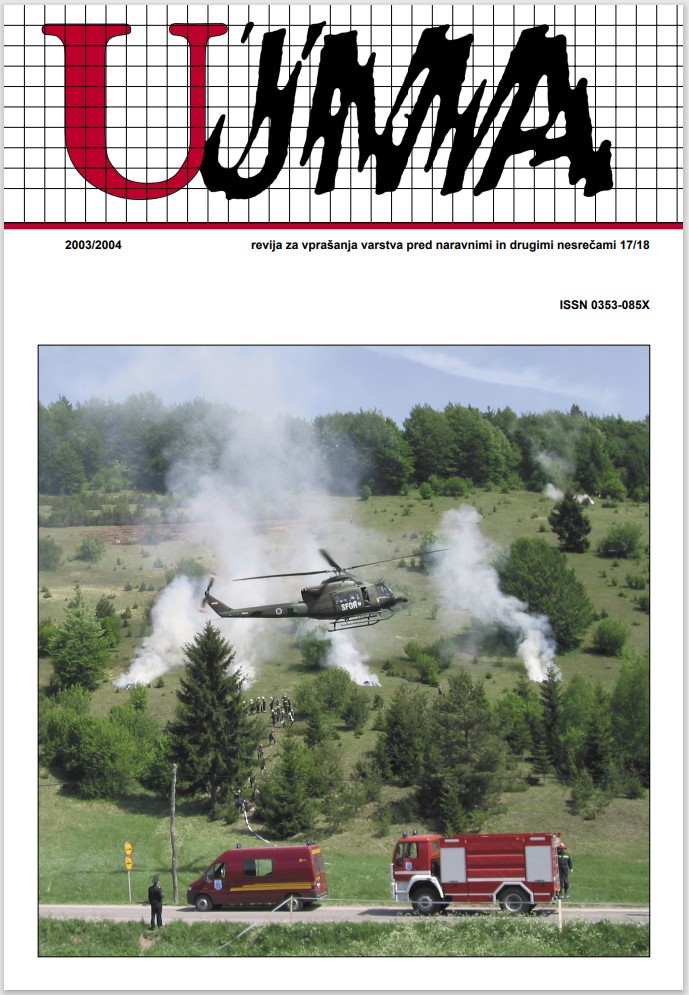CROP DAMAGE DUE TO CATASTROPHIC DROUGHT IN 2003
Abstract
In 2003, Slovenia recorded its most severe water deficit in all agricultural areas of the country. In addition to summer drought, which is a typical phenomenon of northeastern Slovenia and the Littoral region, the whole country’s agriculture suffered in 2003 due to the exceptionally early, severe spring drought, which extended into late summer. Only 40 to 70% of the normal precipitation fell in the major part of Slovenia in the period from March to August. In this period, the cumulative water deficit for grass increased to 500 mm in the Littoral region, ranged from 400 to 450 mm in northeastern and southwestern regions, and was above 300 mm in central Slovenia. Particulary adverse was the combination of drought and high temperatures, enhancing evapotranspiration and reducing soil moisture. Extreme temperatures caused heat stress, especially to less tolerant plants. Damage due to drought was recorded for more than 60 % of agricultural land in Slovenia. The first estimations of losses in crop yield in 2003 exceeded 103 million EUR. Although several severe and prolonged droughts have occurred in Slovenia in recent years, substantial changes are yet to be made in agricultural practice. The most vulnerable regions in the last decade are becoming increasingly more vulnerable due to the increase of water shortage. The 2003 phenomenon has shown that new regions are being added to the group of vulnerable regions prone to drought. This has raised the awareness that the recent impact of drought on available water resources is highly significant, while the currrent climate change scenarios suggest that the frequency and impacts of such events could also increase. Are we prepared for this?
References
Al-Khatib, K., Paulsen, G.M., 1999. High-temperature effects on photosynthetic processes in temperate and tropical cereals. Crop Sci. 39, 119–125.
Kapun, S, 2003. Tehnološki ukrepi za zmanjšanje za zmanjšanje posledic suše. V: Posvet Kmetijsko-gozdarske zbornice, 28. avg. 2003, Gornja Radgona, Kmetijsko-gozdarska zbornica: 17–21.
Frensch, J.,1997. Primary responses of root and leaf elongation to water deficits in the atmosphere and soil solution. Journal of Experimental Botany, 48, 310: 985–999.
Naglič, M., 2003: Kako zmanjšati odvisnost kmetijstva od vremena? V: Kaj storiti za zmanjšanje posledic suše v kmetijstvu, Posvet Kmetijsko-gozdarske zbornice, 28. avg. 2003, Gornja Radgona, Kmetijsko-gozdarska zbornica, 5–7.
Kmetijski zavod Maribor, Sadjarski nasveti 2003. Povzeto po http://www.kmetzav-mb.si/nasveti/sadje.htm (9. 2. 2004).
Program odprave posledic škode v kmetijstvu zaradi naravnih nesreč, MKGP.
Statistični urad RS. 2001. Pokrovnost tal Slovenije, Statistični GIS pokrovnosti tal Slovenije, stanje 2001. Povzeto po http://www.stat.si/doc/vsebina/gis_ podatki.doc (9. 2. 2004).
Stražar, S., 2003. Nacionalni program namakanja Republike Slovenije od načrtov do realizacije. V: 14. Mišičev vodarski dan 2003, Maribor, 5. dec. 2003. Vodnogospodarski biro, 229–235.
Zakon o odpravi posledic naravnih nesreč. Uradni list RS, 75/03.
Downloads
Published
Issue
Section
License

This work is licensed under a Creative Commons Attribution-NonCommercial-NoDerivatives 4.0 International License.
The articles are made available to the public under Creative Commons Attribution-NonCommercial-NoDerivatives 4.0 International (CC BY-NC-ND 4.0).


